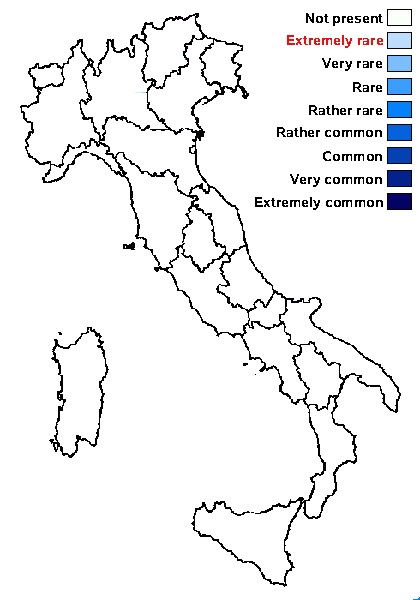Leprocaulon pseudocalcicola Cl. Roux & Magain
in Roux & al., Bull. Soc. linn. Provence, 76: 126, 2025.
Synonyms:
Distribution:
Description: Thallus leprose, episubstratic, 0.4-1 mm thick, green-white to pale grey when dry, pale grey green when moist, entirely consisting of 55-115 μm wide, ecorticate granules without projecting hyphae, the inner granules whitish, the medulla well-developed, 0.3-0.8 mm thick, white in upper part, pale brown in lower part, with crystals insoluble in K and in N. Apothecia and pycnidia unknown. Photobiont chlorococcoid, the cells globose, 7-14 μm wide. Spot tests: K-, C-, KC+ pale yellow, P-. Chemistry: usnic and isousnic acid, and zeorin or an unknown terpenoid.Note: a recently-described species growing on rain-sheltered, more or less shaded surfaces of calcareous rocks, exceptionally also on dust-impregnated bark at the base of trees, hitherto known only from southern France, but probably more widespread. For further details and an extended description see Roux & al. (2025b). To be looked for in Italy.
Growth form: Leprose
Substrata: rocks
Photobiont: green algae other than Trentepohlia
Reproductive strategy: mainly asexual, by soredia, or soredia-like structures (e.g. blastidia)
In underhangs rarely wetted by rain

Predictive model
Growth form: Leprose
Substrata: rocks
Photobiont: green algae other than Trentepohlia
Reproductive strategy: mainly asexual, by soredia, or soredia-like structures (e.g. blastidia)
In underhangs rarely wetted by rain

Predictive model

